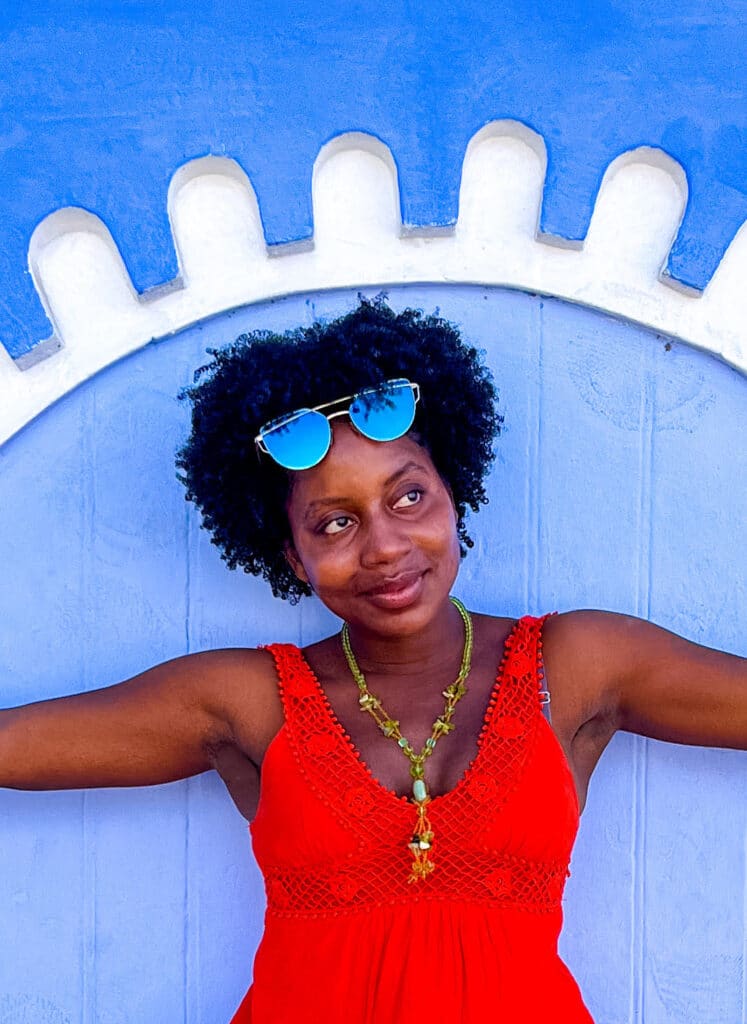Déjà vu in travel is a real thing.
This is exactly what I experienced last November, when I visited Salvador, Bahia, Brazil. I’ve been to many countries, but never in my life have I been to a place in South America that felt so much like a country in Africa. To say it was an homage to Africa alone would be an understatement.
This was a true celebration of negritude at its best. In my many years as a solo traveler, there was this sense of “home” that I had only ever felt on the continent with which my people’s blood ran deep.
But this…this was different. And it was different only because I knew logistically it was. I may not have been physically in Africa, but it was clear the essence of Africa had passed through this land.
With a population of over 50% that identifies as black, as a person of color, the experience of Salvador is one that will leave you moved. The medley of West African influence and Brazilian flair gives rise to the ever present afro-Brazilian culture.
Every aspect of this city lives and breathes black pride in more ways than one. For example, the heart and soul of this region is the historical old town of Pelourinho. Portuguese for “whipping,” this town was so named due to its history as a buying and selling point of slaves during the transatlantic slave trade.
The afro-Brazilians or black Brazilians do not shy away from this history. There is a very keen desire to acknowledge, teach, and celebrate their African origins. From music, to artwork, to food, and even religious beliefs, the ties between Brazil and Africa have never been so beautifully married the way it is visibly portrayed in Salvador.
For the first time in my travel history, I felt like I was in Africa without actually being in Africa.
Drums, the light drum beat of Salvador wakes you each morning in Pelourinho. Those beats are that of the treasured baterias – drumming groups that play for no other reason than pure enjoyment.
To aid in the pulse-driving melodious sounds of these traditional drums, is the afro-Brazilian religion of Candomblé. Women and men dressed in traditional wear, some well on their way to their vending posts in the center square of Largo Pelourinho, are followed by a trail of music that doesn’t stop or end there.
This was a scene that even the great Michael Jackson himself was all too familiar with, as his music video “They Don’t Care About Us,” featured a well known bloco-afro drum group rooted in Candomblé – Olodum.
These drums are the steady beat that take you all throughout the day, carrying you from street to street along those smooth cobblestones. Yet the true richness of this region lies in its people.
It should come as no surprise to you that Brazilians are said to be some of the kindest people to ever exist on this beautiful earth. This, I experienced first hand.
The extent to which I was embraced as a visitor in their homeland was nothing compared to how I was appreciated for simply being a woman of color. I was told time and time again that the women most revered in Brazil were those who looked just like me.
Of course words are only words, but actions bring forth the underlying power behind those words. Interestingly and without a shadow of a doubt, Salvador gave everything it needed to give and more.
The faces I encountered were faces similar to mine, souls similar to mine, and a profound history similar to mine.
The African imprint has never left Salvador. Fragments of the continent are laid out in plane view going as far as showcasing public displays of private admiration.
A place often spoken of as a source in which to see this bond between Brazil and Africa is Casa Do Benin, otherwise known as the House of Benin. An art collection of pieces imported from Benin, this cultural house is part of a bilateral project to solidify the partnership between Brazil and Benin.
The camaraderie between the countries is one that is beautiful to see. Yet, this influence transcends far beyond the borders of both the South American and African continents.
More than steps from Brazil, remnants of the slave trade trickle into the Caribbean. The island nation of Haiti is a perfect example of this.
As a Haitian myself, one of the most astounding things about my experience in Salvador was understanding how African customs built the foundation of afro-Brazilian culture, particularly those of Benin. It goes without saying that religion is an aspect of the slavetrade that was key to the suppressive nature of enslavement.
Of note, birthed as a product of this is a religion, practiced by a small number of people, known as Haitian Vodou. A fusion of Catholicism and parts of both Western and Central African religions, it is actually considered the “sister religion” of Brazilian Candomblé.
One of the main reasons they are so closely related is because, majority of the slaves brought to Brazil came from Benin. There are elements of this history that are very similar to that of Haiti. It was baffling to me how much overlap existed between these regions.
And yet, these connections can easily be seen in each of the monuments and institutions in Pelourinho. It is difficult to shy away from this or ignore it.
Take for example, the black church, Our Lady of the Rosary of the Black People. I was among numerous people who traveled far and wide to see this church. Built by slaves and then subsequently given to those slaves, every statue and saint in this church was…black.
It was heartfelt not just for me, but for the number of people who witnessed exactly what I saw – a re-framing of the biblical narrative from the black perspective.
Another symbolic and must-visit place is the Afro-Brazilian Museum of Culture. I think this was likely the strongest depiction of the message that Salvador sought to convey – African blood ran through these streets.
Before even entering this museum, there was a gate with steel carved depictions of things that had happened to people in the slave trade. That in it of itself was enough to give visitors an idea of the experience they were about to have.
However, it was what existed beyond this gate that truly left me mesmerized – the black experience from the very beginning to present day. Rooms emboldened with artistry portraying black struggles and successes, it was remarkable to see how it was effectively captured.
These places I had visited only scratched the surface of the black beauty that lives in Salvador, Bahia, Brazil. It was truly an experience like none other. This brought a whole new meaning to traveling deeper.
About the Author

Instagram: @iamrubykhan | YouTube: Beyond Eden Travel
My name is Lindsay Bourdeau, and I am a solo travel and lifestyle blogger. I have been on a mission to rediscover myself through soulful solo journeys. Once a music artist, I simultaneously did humanitarian work in developing countries which broadened my perspective of the world. These experiences not only led to personal and professional development, but further solidified by passion for inspiring others to see the beauty of the world through travel. Now a doctor of pharmacy, my followers continue to watch me detail my many life experiences as I navigate beautiful destinations.
